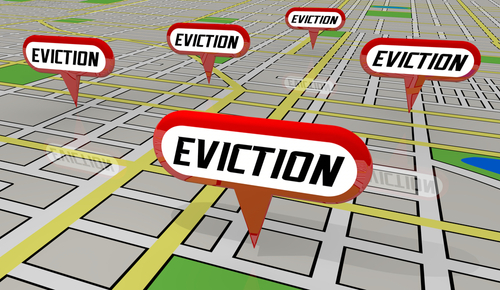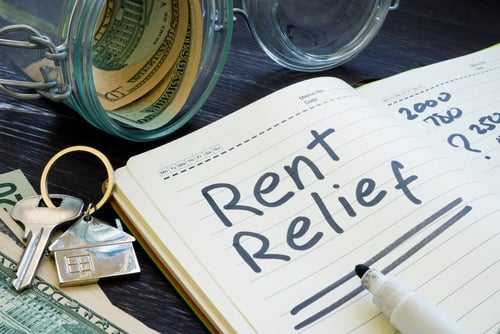
Confusion, frustration, and fear are all words that could easily describe the ever-changing COVID-19 eviction moratorium. As the months’ tick by, both landlords and tenants face uphill battles of a different kind. Plus, navigating the laws and relief program requirements can prove daunting. As the Federal Eviction Moratorium issued by the CDC expired, states and local legislature scrambled to develop their own plans to handle the onslaught of evictions sure to follow. Join us below as we examine the latest eviction moratorium guidelines at the Federal and state level.
What is the CDC Eviction Moratorium?
The COVID-19 pandemic brought along with it unprecedented challenges. As the country and businesses shut down to alleviate the public health crisis, many renters found themselves without employment. In response, the government and CDC took steps to protect individuals and families from eviction due to a pandemic-related loss of income. Essentially, the eviction moratorium guidelines prevented landlords from the following actions –
- Landlords cannot seek to evict a tenant for unpaid rent, including asking the court to issue a writ of eviction.
- The eviction moratorium guidelines prohibit landlords from issuing tenants an eviction notice.
- Owners cannot engage in self-help evictions through harassment or intimidation to force tenants to vacate.
That said, landlords could still legally file against tenants for other infractions such as lease violations. However, attempting to evict a tenant in violation of the orders could result in fines or further litigation.
The Latest News on Federal Eviction Moratorium Guidelines
On August 26, 2021, the Supreme Court of the United States, through a majority decision, rejected further eviction moratorium guidelines set forth by the administration. Essentially, ending the only thing standing between millions of tenants and a fate of almost certain eviction.
 Throughout the 8-page court opinion, the majority justices cited that the CDC had overstepped its authority saying, “the CDC has imposed a nationwide moratorium on evictions in reliance on a decades-old statute that authorizes it to implement measures like fumigation and pest extermination.” It then went on to say that “it strains credulity to believe that this statute grants the C.D.C. the sweeping authority that it asserts.”
Throughout the 8-page court opinion, the majority justices cited that the CDC had overstepped its authority saying, “the CDC has imposed a nationwide moratorium on evictions in reliance on a decades-old statute that authorizes it to implement measures like fumigation and pest extermination.” It then went on to say that “it strains credulity to believe that this statute grants the C.D.C. the sweeping authority that it asserts.”
Although, not all justices agreed with the decision citing the continued health crisis as the Delta variant can be found to some degree in almost all communities across the country. However, the majority clapped back, saying that “our system does not permit agencies to act unlawfully even in pursuit of desirable ends.”
So, what does this mean?
The decision advises that Congress must authorize any future efforts to impose Federal eviction moratorium guidelines. That said, at this point in time, it appears no plans for further action are planned.
But Supreme Court justices and politicians are not the only ones split over the choice to end the current eviction moratorium guidelines. Landlords collectively owed billions in back rent, cheered the decision. However, for tenants, fear abounds as they are now being held accountable for months of unpaid rent charges up to possible eviction. On the other hand, the federal and state governments are scrambling to streamline emergency funds to bring relief to landlords and renters.
What is Next for States Regarding Eviction Moratorium Guidelines?
Despite the dispute taking place at the Federal level, many individual states opted to take separate action. In Maryland, the eviction moratorium ended on August 15, 2021. Thus, landlords can seek eviction, even for non-payment. However, the next challenge for landlords is navigating the enormous backlog of eviction cases in the courts. That said, states continue to take measures to keep tenants in homes even without an eviction moratorium. These actions include –
- Possible extension of local eviction moratorium guidelines to afford tenants more protection. This allows more tenants to become fully vaccinated and take advantage of emergency financial relief.
- Streamline processes to distribute over $40 billion in emergency rental assistance. So far, only a mere fraction of that fund is utilized.
- Enact added protection measures such as expungement of eviction records and just-cause eviction standards to protect renters over the long term.

To Improve Emergency Relief Practices, States Can –
- Boost communication efforts across all platforms, including state or local websites and eviction summons, including emergency relief guidance.
- According to Treasury guidance, local authorities should reduce documentation red tape by utilizing self-attestations, categorical eligibility criteria, and income-based proxies to determine eligibility.
- If a landlord is unresponsive or uncooperative, emergency relief programs should distribute assistance direct to tenants.
- Encourage courts to develop information sharing processes that identify and stop the eviction process for cases where landlords have applied for emergency rental assistance, were made whole, or have not yet revoked the filing.
- Emergency rental assistance program representatives should maintain a standing presence in court hearings to provide valuable information and application instruction to tenants and landlords facing eviction proceedings.
- Make efforts to prioritize and fast-track applications for any tenant in imminent threat of eviction.
- ERA programs should use all available allocations to increase staffing to improve processing time and efficiency.
- Improve and expand relationships with smaller local programs to help conduct outreach, provide application support, and distribute ERA funds.
What to Do if You Need Rent Payment Assistance?
Even for struggling tenants who have regained employment, the pile-up of bills could be overwhelming. That said, there are programs available to help tenants and landlords bridge the gap and potentially help avoid eviction proceedings. The first best step is to reach out to your landlord when you have fallen on difficult circumstances. In many cases, the landlord may be willing to work out a payment plan that can benefit both parties. However, if you find yourself needed extra help, reach out to the resources below –

- Emergency Rental Assistance Program (or call 877-546-5595)
- 211 Database for rent payment assistance
- Department of Human Services – Local Offices
- Consumer Credit Counseling Services of Maryland (or call 1-800-642-2227)
- Debt Collection Consumer Resources
Are You a Landlord Struggling to Make Sense of Eviction Moratorium Guidelines?
As a professional third-party management firm, Bay Property Management Group understands the unique challenges that landlords and tenants face. Whether it is a pandemic-related concern or an eviction for lease violations, removing a tenant from a home is difficult.
Our expert property managers allow owners peace of mind that someone looks out for their best interest while balancing the tenant’s needs. If eviction is the only option, your dedicated manager facilitates the process on behalf of the owner and is with you every step of the way. So, if you have a property that requires eviction or you need help filling a post-pandemic vacancy, give us a call today.
